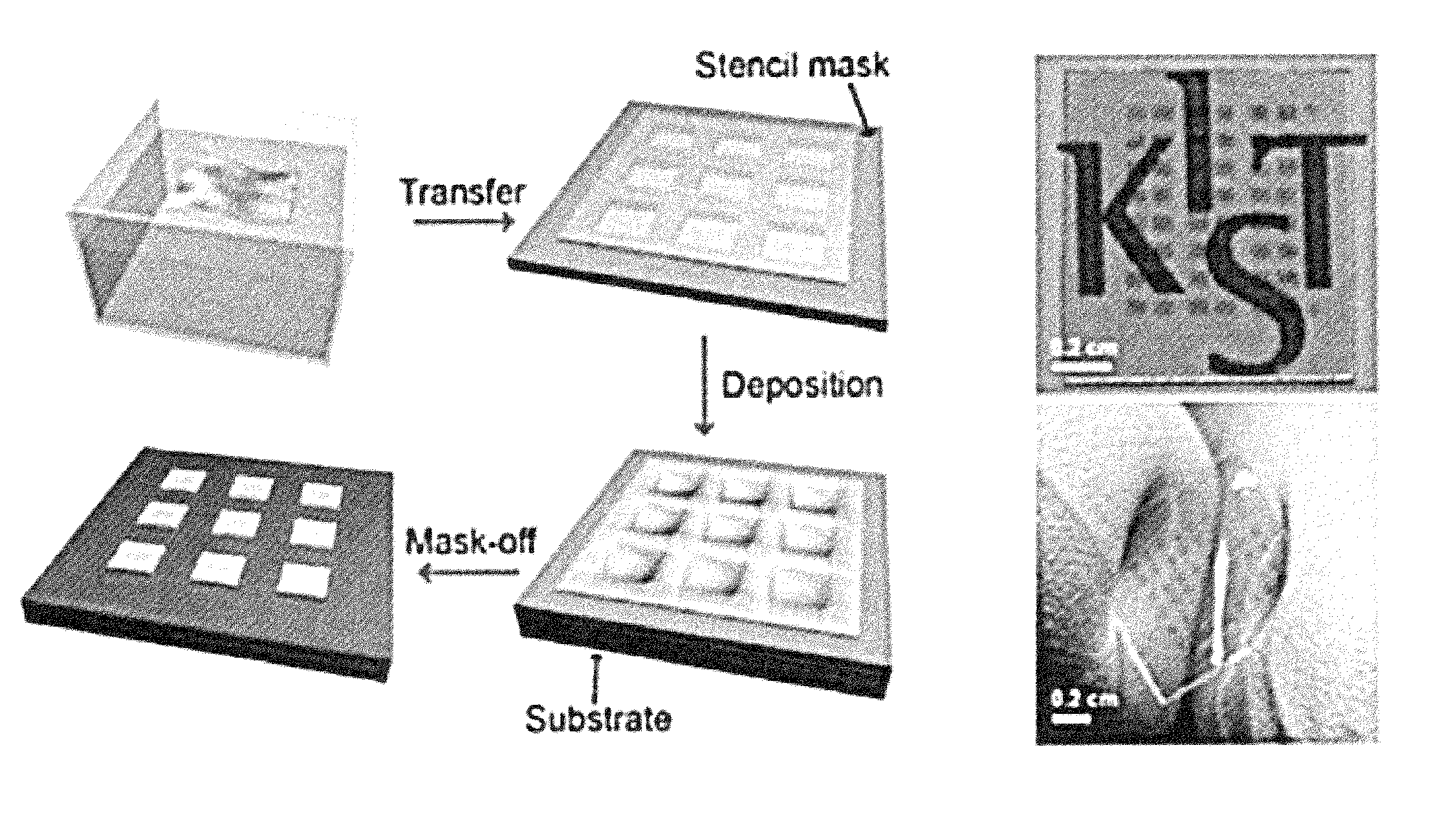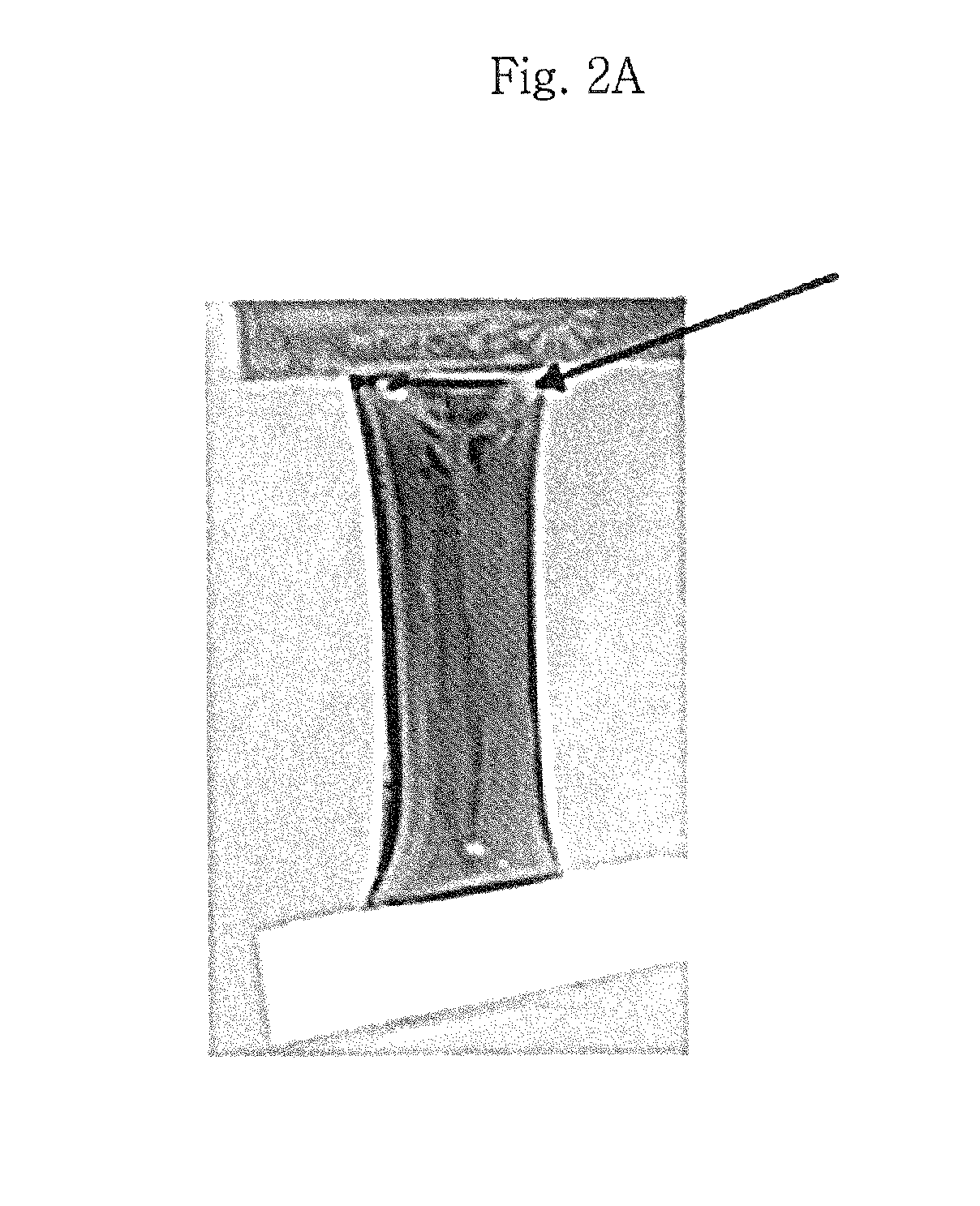Hybrid electronic sheets
a technology of electronic sheets and hybrid sheets, applied in the direction of printed circuit manufacturing, conductive pattern formation, on/in inorganic carriers, etc., can solve the problems of inability to transfer onto a substrate with a complex shape, unsatisfactory contact properties of flexible substrates, and reduced device performance, etc., to achieve superior and tunable electrical properties, and large area
- Summary
- Abstract
- Description
- Claims
- Application Information
AI Technical Summary
Benefits of technology
Problems solved by technology
Method used
Image
Examples
preparation example 1
Preparation of Hybrid Electronic Sheet 1
[0057]As an exemplary embodiment of the present disclosure, a hybrid electronic sheet was prepared as follows.
[0058]Preparation of Colloid Solution
[0059]First, an aqueous solution was prepared by adding 2% w / v sodium cholate as a surfactant to distilled water and a colloid solution was prepared by stabilizing a single-walled carbon nanotube (SuperPure SWNT, solution type, 250 mg / mL, Nanointegris) as a graphitic material with the sodium cholate by dialyzing for 48 hours.
[0060]Assuming that the average length and the average diameter of the carbon nanotube (CNT) are 1 μm and 1.4 nm, respectively, the number of the single-walled carbon nanotube included in the colloid solution can be calculated according to the following equation.
Number of single-walled carbon nanotube ( / mL)=concentration (μg / mL)×3×1011 [Equation 1]
[0061]The number of the single-walled carbon nanotube included in the colloid solution was calculated as 7.5×1013 / mL.
[0062]Preparati...
preparation example 2
Preparation of Hybrid Electronic Sheet 2
[0078]As another exemplary embodiment of the present disclosure, a hybrid electronic sheet was prepared in the same manner as in Preparation Example 1 except that the biomaterial was prepared by genetic recombination as follows.
[0079]Preparation of Biomaterial
[0080]M13HK was prepared directly by genetic recombination using the restriction enzymes BspHI (product # R0517S, NEB) and BamHI (product # R3136T, NEB). The base sequences used to prepare the M13 phage in which the peptide DSWAADIP (SEQ ID NO 1) is displayed on the body (p8 GB#1) were as follows.
[0081]
(SEQ ID NO 8)5′ [Phos] CATGAAA AAGTCTTTTG TCCTCAAAGCCTCTGTAGCC GTTGCTACCC TCGTTCCGAT GCTGTCTTTCGCTGCTGATT CTTGGGCTGC GGATATTCCG 3′.(SEQ ID NO 9)5′ [Phos] GATC CGGAATATCC GCAGCCCAAG AATCAGGCAGCGAAAGACAGC ATCGGAACGA GGGTAGCAAC GGCTACAGAGGCTTTGAGGA CAAAGACTT TTT 3′.
[0082]The base sequences used to prepare the M13 phage in which the peptide DNPIQAVP (SEQ ID NO 2) is displayed on the body (p8 GB...
preparation example 3
Preparation of Hybrid Electronic Sheet 3
[0099]As an exemplary embodiment of the present disclosure, a hybrid electronic sheet was prepared using a mixture of a graphene sheet and a single-walled carbon nanotube as a graphitic material as follows.
[0100]Preparation of Colloid Solution
[0101]First, an aqueous solution was prepared by adding 2% w / v sodium cholate as a surfactant to distilled water and a colloid solution was prepared by stabilizing a single-walled carbon nanotube (SuperPure SWNT, solution type, 250 mg / mL, Nanointegris) and a graphene sheet (PureSheets QUATTRO, solution type, 50 mg / mL, Nanointegris) as graphitic materials with the sodium cholate by dialyzing for 48 hours.
[0102]Assuming that the average length and the average diameter of the carbon nanotube (CNT) are 1 μm and 1.4 nm, respectively, the number of the single-walled carbon nanotube included in the colloid solution is calculated as 7.5×1013 / mL according to Equation 1.
[0103]The number of the graphene sheet can be...
PUM
| Property | Measurement | Unit |
|---|---|---|
| diameter | aaaaa | aaaaa |
| length | aaaaa | aaaaa |
| thickness | aaaaa | aaaaa |
Abstract
Description
Claims
Application Information
 Login to View More
Login to View More - R&D
- Intellectual Property
- Life Sciences
- Materials
- Tech Scout
- Unparalleled Data Quality
- Higher Quality Content
- 60% Fewer Hallucinations
Browse by: Latest US Patents, China's latest patents, Technical Efficacy Thesaurus, Application Domain, Technology Topic, Popular Technical Reports.
© 2025 PatSnap. All rights reserved.Legal|Privacy policy|Modern Slavery Act Transparency Statement|Sitemap|About US| Contact US: help@patsnap.com



